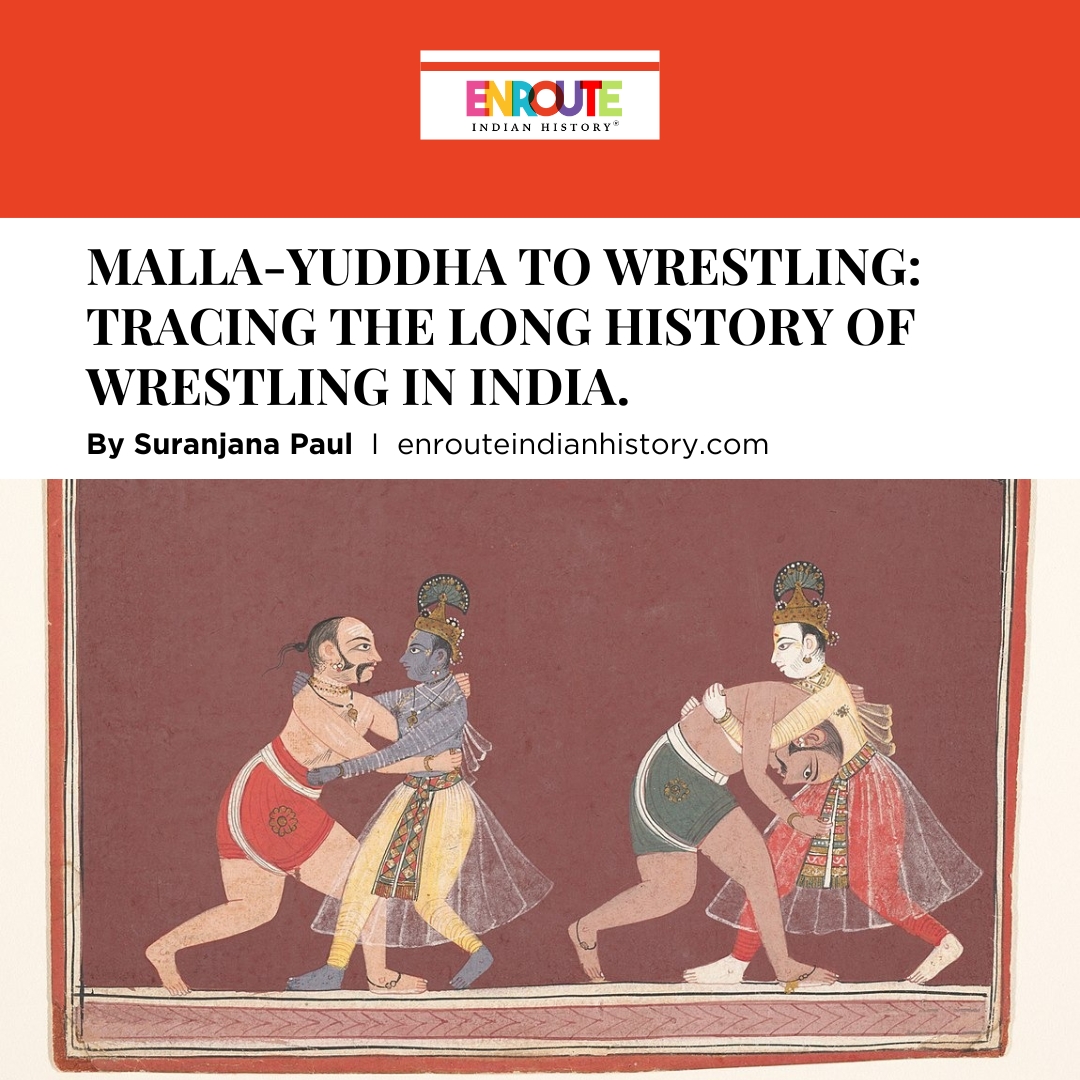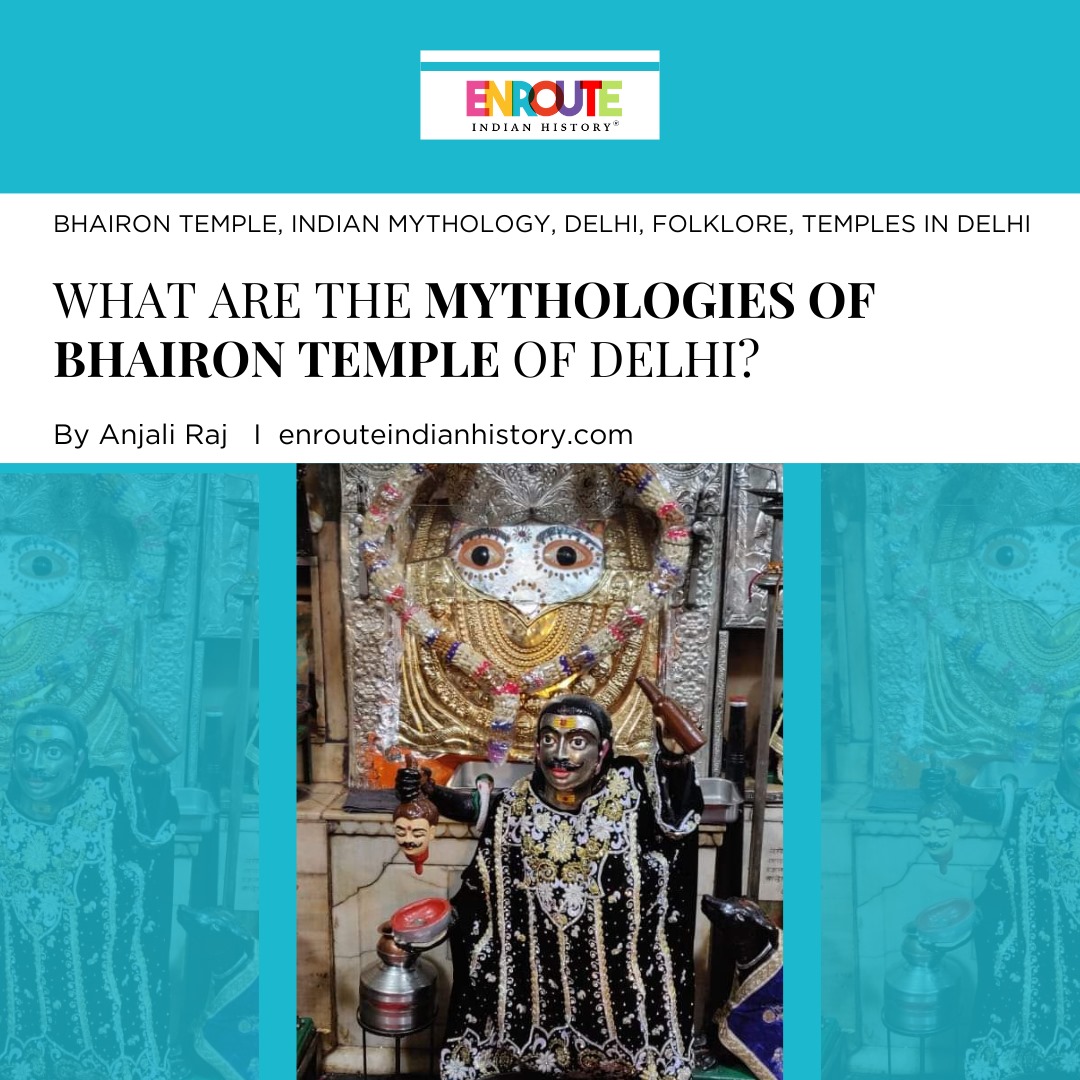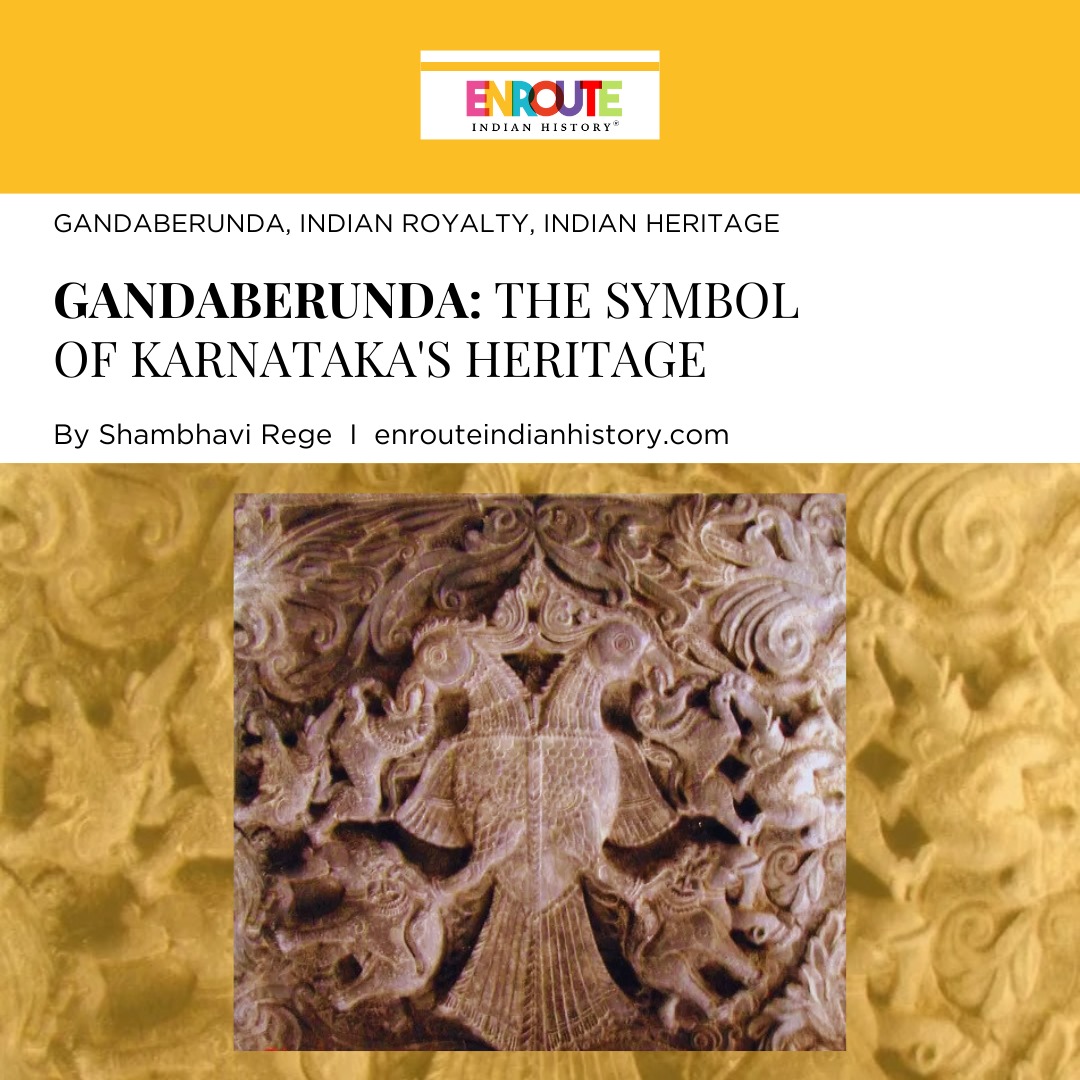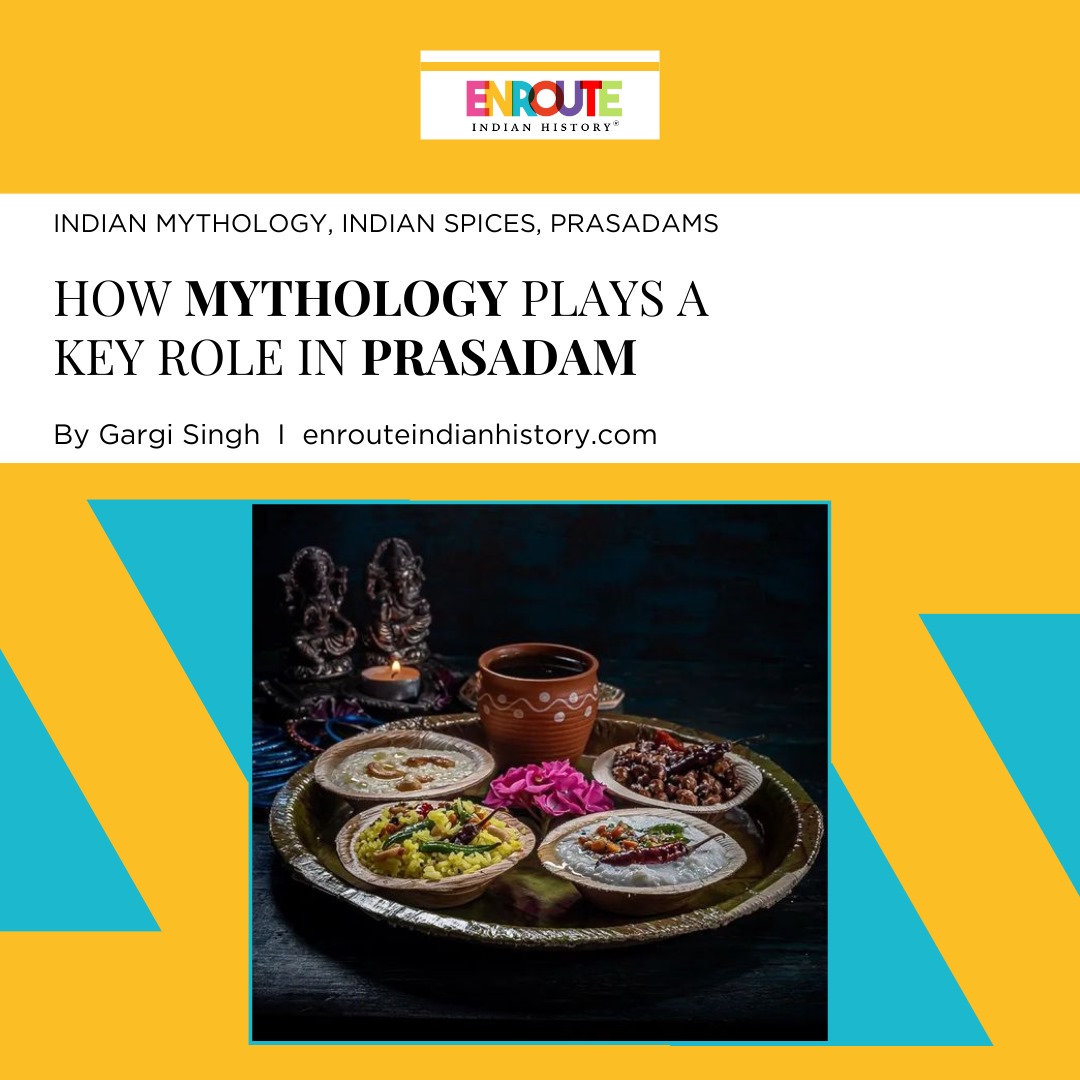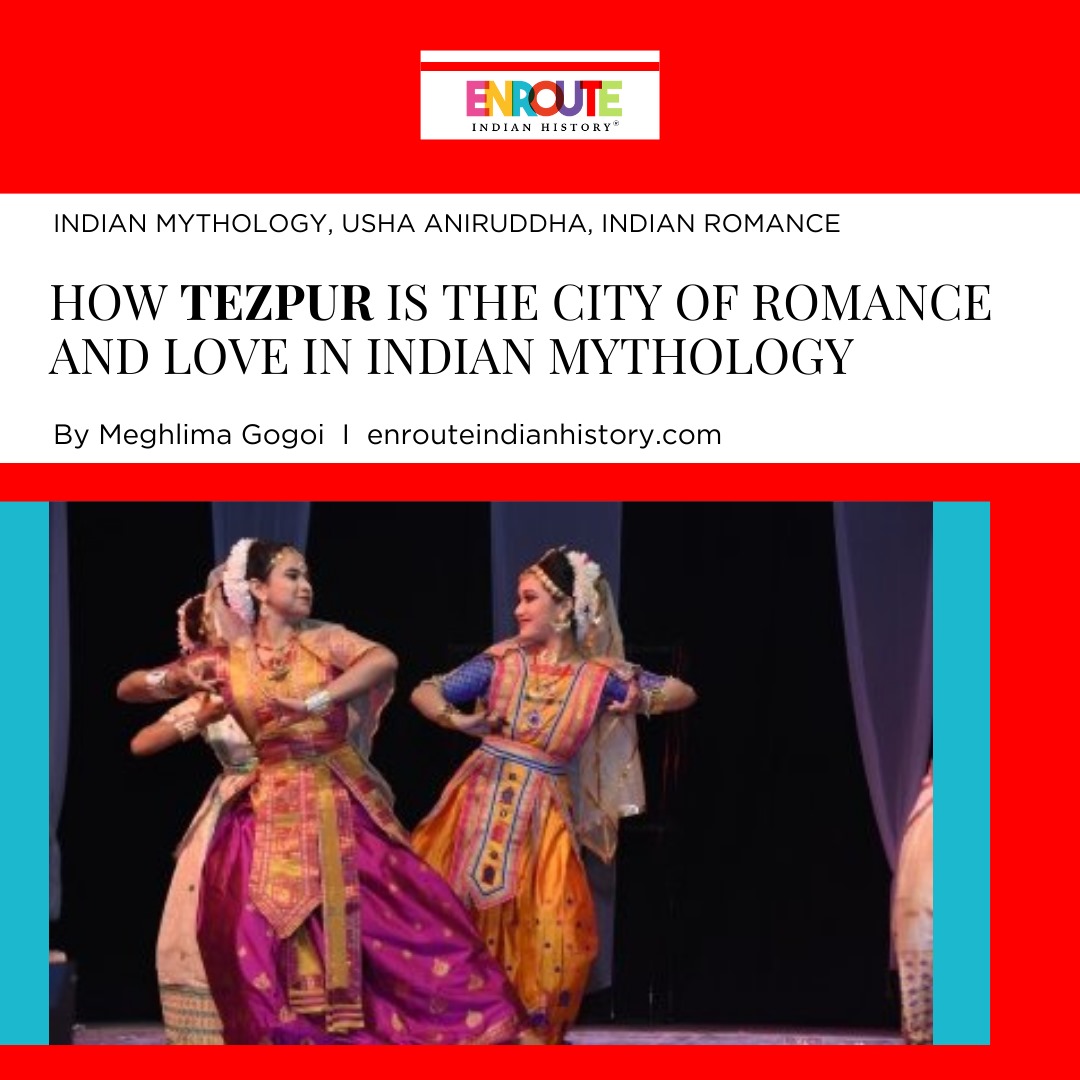Surpanakha, not Rama, Shines as the Protagonist in Karbi Ramayana
- enrouteI
- October 29, 2023

Reverberating echoes of rightfulness and devotion in the hearts of Indians with its very utterance, the Ramayana is a legacy in itself. It carries along with it the weight of wearing the majestic crown of being everyone’s favorite narrative; from being the bedtime story for the eager ears of children to being a lesson on the responsibility to complement the wisdom of grandparents. What is fascinating, though, is that the Ramayana itself is incredibly diverse, with nearly 300 different versions reflecting the diversity possessed by the people and culture of India.

A representation of Rama and Lakshmana overseeing the construction of the stone bridge (Credits: Xkl Education)
Among these numerous versions is the Karbi Ramayana, a literary gem tucked away in the country’s northeastern region. Giving a new face to this epic poem, the Karbi Ramayana, takes the form of song verses within the Karbi tribe and is known as ‘Sabin Alun’, which translates to the ‘Song of Sabin’. A treasure to the tribe, ‘Sabin Alun’ is inseparable from the history, culture, and daily lifestyles of the Karbi people.
Who are the Karbis?
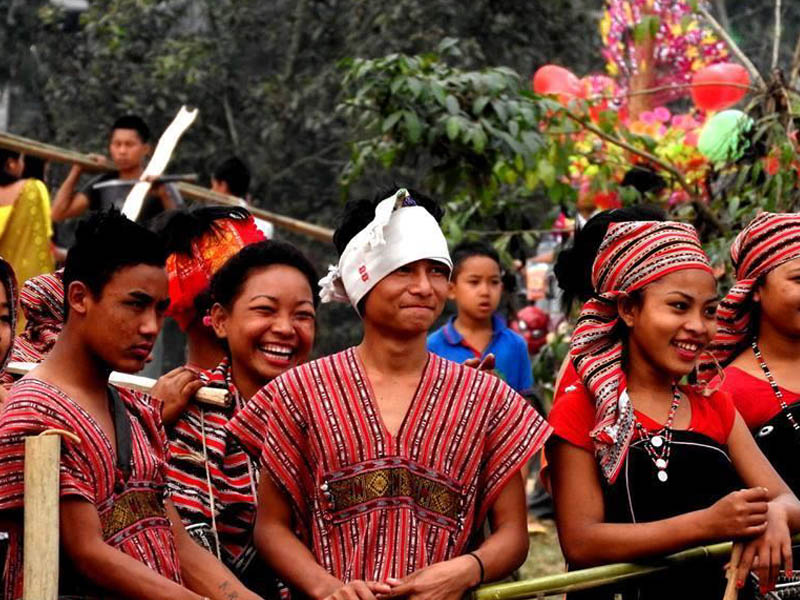
A scene from the Rongker Festival of the Karbi people (Credits: Utsav, Incredible India)
One of the major hill tribes of Assam, the Karbi tribe, linguistically traces its origins to the Tibeto-Burman group of western China. Entering Assam from Central Asia along with others, the history of this tribe is solely alive through its folklore and oral traditions passed down from generations to generation. One of the folklores believed in the naming of the tribe ‘Karbi’ is rooted in the Tretayug, which witnessed the battle between Rama and Ravana. They supposedly fought on Rama’s side during the war and were entrusted with his arrows (kar). This gave them the name ‘Karikiri’,’ which got corrupted into its present form of ‘Karbi’. Regardless of being addressed as ‘Mikirs’ in Assam history, the Karbi tribe prefers to call themselves either ‘Arleng’ (men) or ‘Karbi’. The Karbi Ramayana is central to Karbi culture as a whole because it is set against the backdrop of the Karbi people’s everyday lives.
Sabin Alun: The Karbi Ramayana
Known as ‘Sabin Alun’, which translates to the ‘Song of Sabin’ (Surpanakha), the Karbi Ramayana is sung in the form of a song. According to the tribe’s legends, such a song did not exist before. Hemphu (the Supreme God) therefore asked Rangsena, a musician, to write a song and introduce the art of music to the Karbi. So, Rangsena took birth as Mirijang brothers and composed the ‘Sabin Alun’. Thereby, a new version of the Ramayana was born in the hands of these Karbi poets. The original Ramayana served as inspiration for the Sabin Alun, but this version of the poem is set in the land of the Karbi people rather than Ayodhya.
The Karbi Ramayana’s first chapter describes the birth of “Sinta” (Karbi Sita) from a peahen’s egg. King Janak is portrayed as a farmer who looks over the cultivation of his field by sitting on a tree hut. When a few boys found an unusual egg in Janak’s field and reported it to him, he asked his wife Hemphi to keep it safe because it was not edible. A few days later, she discovered a beautiful girl in place of the egg, who was named “Sinta” by the couple. She is described as a typical Karbi girl who helps out around the house, helps her father gather food, and weaves cloth on the loom. Nonetheless, what stands out is her tremendous strength, which is depicted in the song when she asks her mother for a knife and proceeds to cut down all the trees in the fields.
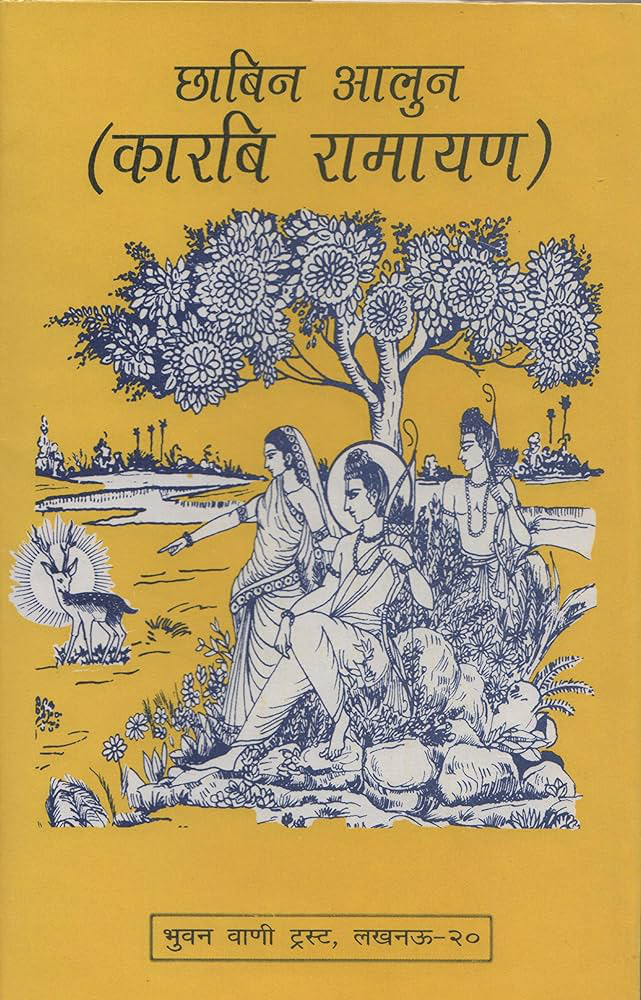
Cover page of ‘Chabin Alun – Karbi Ramayana’ written by Dr. Deven Chandra Das
(Credits: Exotic India)
The subsequent chapter describes the beginnings of the legend of Ram’s birth, the hero who would save the world from the evils of Rabon (portrayed here as having 12 heads) and his brother, Meghanand. An intriguing change from the traditional Ramayana is that after Ram wins Sinta in marriage, both Ram and Lokhon (Lakshmana) decide to remain at Janak’s home, with Ram as the resident son-in-law (gharjamai). The Karbi Ramayana states how both the brothers helped Janaka in Jhum cultivation, which is a part and parcel of the tribe. It is believed that Ram, Lokhon, and Sinta ventured into the forest not because they were exiled but because they needed land for agriculture and were required to remain behind for supervision. Perhaps the most alluring aspect of this Karbi Ramayana is its name: the Song of Sabin (Surpanakha). By placing Sabin at the center of attention, this Ramayana presents an alternative viewpoint on the tale that has held such significance for all Indians and worldwide scholars.
One of the popular narratives believed that while Ram, Lokhon, and Sinta were in the forest of Narojin Hills, Sabin assumed the form of a beautiful damsel and befriended Sita. Sabin then returned to Lanka and informed her brother, Ravana, that the two brothers, Ram and Lokhon, didn’t see eye to eye and fought under a banyan tree. Meanwhile, Sinta talked to Lokhon about the beauty of Sabin and asked him to marry her. When he rejected Sinta’s proposal regarding Sabin, she accused him of planning to marry her after Ram’s death. Lokhon eventually succumbed and married Sabin. Sabin entered the room as his wife, but Lokhon slashed her nose with a knife, prompting Sabin to run back to Lanka, crying. Sabin, in the other version of events, approached Lokhon as a beautiful young woman and proposed marriage to him, all the while disparaging Sita. “Look Lokhon…I am more beautiful than Sinta…I am more beautiful and hardworking than Sinta. Hence, you must marry me.” An enraged Lokhon cut Sabin’s nose with a knife. The Karbi Ramayana reflects on the sadness and humiliation of Sabin through the following translated verse, “O Sabin dear…Sabin is so saddened… And Sabin’s mind is tortured so much more… Why is Rabon afraid to fight?”
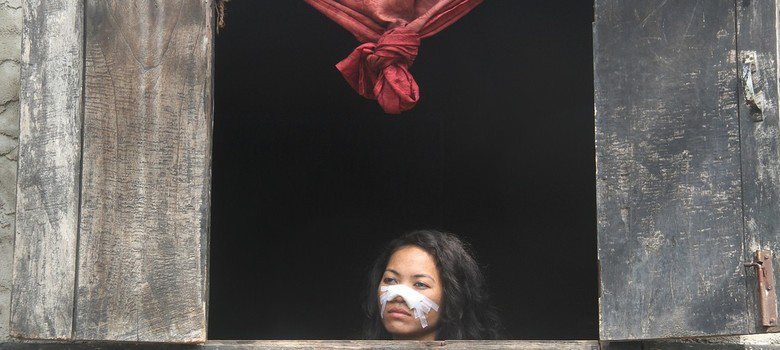
An artistic representation of Laksham cutting Surpanakha’s nose in presence of Sita and Rama (Credits: Maddy’s Ramblings)
Later chapters are almost verbatim retellings of Valmiki’s Ramayana. One notable exception is the scene in which Lokhon stubbornly stayed with Sita despite hearing Ram’s cries from the forest. “I am not going; my brother is not dying”, Lokhon states. Sinta replies, “Oh, Lokhon… If you do not go…You want to marry me. And this is what you have in mind…” This brief prelude to Sita’s kidnapping in the Karbi Ramayana draws the attention of scholars all over the world, something that is unheard of in Valmiki’s Ramayana.
Documentary on Sabin Alun: The Broken Song

A still from ‘Sabin Alun: The Broken Song’ (Credits: Scroll.in)
A brainchild of Assamese filmmaker Altaf Mazid, ‘The Broken Song’ (Sabin Alun) is a 52-minute-long sneak peek into how the Karbi Ramayana forms the foundation of the tribe’s heritage and culture. This film is not like your standard documentary, in which facts and figures are presented as the sole objective. Performers in Altaf Mazid’s documentary adopt a cinematic style, singing and acting out scenes from the Karbi Ramayana to create the impression of a musical. While Rabon (Raavan) is surrounded by self-portraits referring to his twelve heads, Sinta (Sita) is shown driving off a tractor, demonstrating her strength. Produced by the Public Service Broadcasting Trust, this piece of art is a living testament to the influence of the Karbi Ramayana on the animistic and agricultural practices of the Karbi people.
Ramayana Folk Traditions in North-East India
Acting as a unifying agent, Ramayana folk traditions play a pivotal role in bringing the multicultural society of the country’s eight northeastern states together. Waves of astonishment splash across an individual’s mind as they delve deeper and deeper into the rich cultural heritage associated with the Ramayana in each of these states. The state of Assam possesses more than five written renditions and adaptations of the Ramayana in Assamese and three oral narratives in tribal languages. An eight-headed demon kidnaps the princess in the Ramayana of the Khamti tribe of Arunachal Pradesh, “Lik Chaw Lamang.” While Meghalaya doesn’t possess any elaborate Ramayana traditions, it is believed that the oranges of the ri-war region are extremely sweet because Rama brought those oranges from Lanka and dropped them here during his journey. If twins are born into a Jaintia family, they are usually given the names Ram and Lokhon. Among the many deviations from the original Ramayana found in the Mizo version of the story, “Khena and Rama,” is a story about how Sita, in response to Rama’s demands, sculpts a statue of Lusariha (Ravana) that comes to life and causes Rama to doubt his wife’s chastity.
All things considered, the Ramayana traditions of North-East India are largely uncharted and demand the attention of researchers and historians before they are lost to the sands of time.
References:
- Gogoi, R. and Senapati, J. (2020). Karbis – the Unsung Tribe of Assam. International Journal of Creative Research Thoughts (IJCRT).
- Eastern Routes. (n.d.). Assamese Tribes : Mising – Bodo – Karbi – Kuki – Dimasa – Deori – Tiwa … [online] Available at: https://easternroutes.com/northeast-india/assam/tribes/
- www.newsbharati.com. (n.d.). Sabin Alum the Rama Story in vogue among the Karbi janjati of Assam. [online] Available at: https://www.newsbharati.com/Encyc/2021/5/19/Karbi-Ramayana.amp.html
- Oct 23, T.G.G. / U., 2016 and Ist, 22:41 (n.d.). Ram, Lokhon, Sinta. And Sabin. [online] Mumbai Mirror. Available at: https://mumbaimirror.indiatimes.com/opinion/columnists/trisha-gupta/ram-lokhon-sinta-and-sabin/articleshow/55003254.cms
- www.newsbharati.com. (n.d.). Karbi Ramayana II- The Surpanakha Episode and other stories. [online] Available at: https://www.newsbharati.com/Encyc/2021/5/26/Karbi-Ramayana.html
- www.youtube.com. (n.d.). Sabin Alun: The Broken Song. [online] Available at: https://www.youtube.com/watch?v=90cNBpyXQlk
- Ramnath, N. (2016). An old-new spin on the Ramayana in the documentary ‘The Broken Song’. [online] Scroll.in. Available at: https://scroll.in/reel/802807/an-old-new-spin-on-the-ramayana-in-the-documentary-the-broken-song
- Bora, T. (2018). Ramkatha Tradition in North East India: An Unexplored Avenue. IOSR Journal Of Humanities And Social Science (IOSR-JHSS, [online] 23(11). doi:https://doi.org/10.9790/0837-2311040107.
- August 8, 2024
- 8 Min Read
- April 25, 2024
- 14 Min Read
- February 16, 2024
- 8 Min Read


